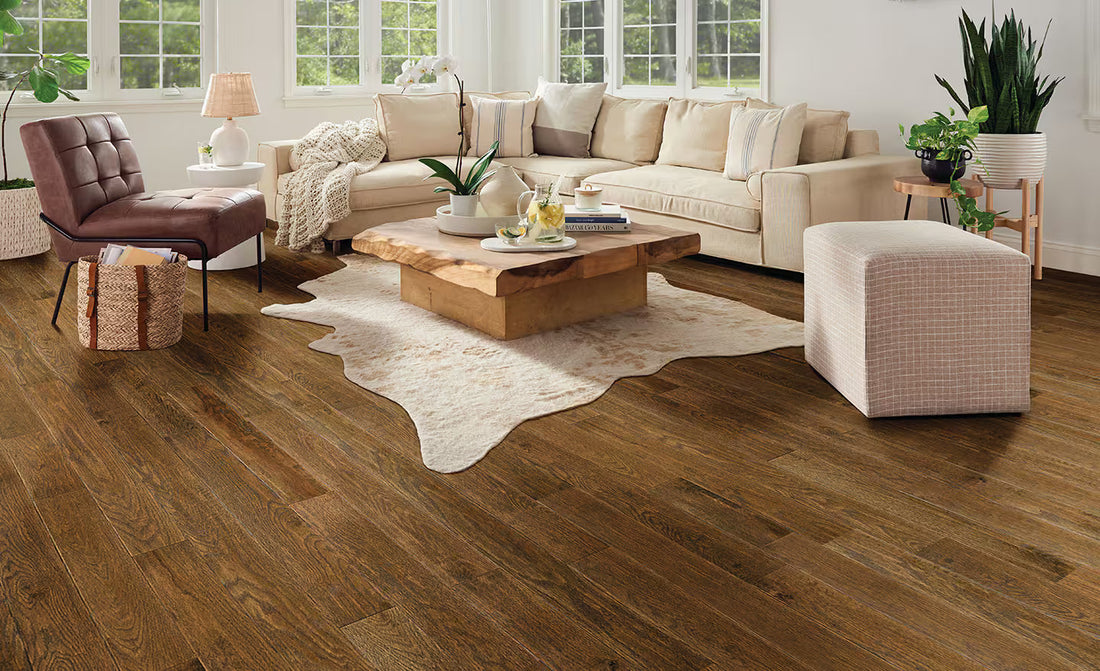Engineered wood flooring is one of the UK’s most popular ways to bring the warmth and elegance of real wood flooring into your home—without the cost and upkeep of solid wood. But there’s one decision that often gets overlooked: thickness.
From how sturdy your floors feel underfoot, to how long they last and how many times they can be refinished, thickness plays a major role. In this guide from UK Flooring Depot, we’ll break down the different thickness options, when to use them, and how they affect performance, budget, and installation.
Why Thickness Matters
The thickness of engineered wood flooring affects more than just appearance—it influences performance over time. Thicker boards provide better durability, resisting heavy foot traffic in busy family homes. They also offer greater refinishing potential, meaning you can sand and restore them several times throughout their lifespan. Another key factor is stability: thicker planks reduce movement, creaks, and vibration, giving a solid feel underfoot. Cost is also linked to thickness, with thicker boards requiring more investment upfront but often lasting far longer, which can save on replacement costs in the long run.
Common Thickness Options for Engineered Wood Flooring
10mm Slim and Practical
A 10mm engineered wood floor is best for low-traffic rooms, loft conversions, or areas where ceiling height is restricted. It is an affordable option and quick to install, making it popular for DIY projects. This slim profile also works well with underfloor heating systems because it transfers heat more efficiently. However, the trade-off is a shorter lifespan and fewer opportunities to refinish compared to thicker options. For bathrooms and kitchens, many homeowners combine engineered wood in main living areas with vinyl flooring (LVT) in wet spaces for water resistance.
14mm The All-Rounder
The most versatile option is 14mm, a thickness that suits living rooms, dining areas, and hallways. It provides strong durability at a reasonable price while offering a good wear layer for refinishing. For households seeking style as well as practicality, 14mm thickness is often available in beautiful herringbone and parquet designs that add character and charm to busy spaces.
18–20mm Maximum Strength
For high-traffic homes or even commercial areas, 18–20mm engineered wood is the premium choice. Its exceptional durability, sound insulation, and multiple refinishing opportunities make it a long-lasting investment. While the cost is higher and installation usually requires a professional, the performance is unmatched. Many homeowners pair heavy-duty wood in living areas with waterproof flooring in bathrooms, utility rooms, and kitchens for a complete and practical solution.
The Importance of the Wear Layer
Beyond overall thickness, the wear layer—the top layer of real wood—plays a crucial role in how long your flooring will last. A thin 1–2mm wear layer provides only limited refinishing, which reduces lifespan. A 3–4mm wear layer allows sanding two to three times, ideal for long-term home use. The premium option is a 5–6mm wear layer, which offers multiple refinishes over decades, ensuring your floor maintains its beauty for generations. For most UK households, choosing a board with at least a 3mm wear layer is the best balance of durability and cost.
Installation and Budget Considerations
If you are working on a spare room or a property renovation with a tighter budget, 10–12mm boards are light, affordable, and easy to install. The 14mm thickness offers balanced performance and cost, making it the most popular choice for family homes. For those looking for the ultimate in longevity, 18–20mm boards provide strength and refinishing potential, though they do require more investment and professional fitting.
For larger renovation projects, it’s worth exploring the sale section, where you can often find excellent deals across engineered wood, laminate, and LVT.
Frequently Asked Questions
Is thin engineered wood suitable for underfloor heating?
Yes, 10mm boards are particularly effective because their slim profile allows for efficient heat transfer.
How many times can engineered wood be refinished?
That depends on the wear layer. A 3mm or thicker wear layer usually allows at least two sandings, extending the floor’s lifespan.
Does thickness affect noise?
Yes, thicker boards provide better sound insulation, which is especially beneficial in upper-floor rooms or apartments.
Summary
The right engineered wood flooring thickness depends on your space, foot traffic, and budget. For most UK homes, 14mm offers the perfect middle ground—strong, cost-effective, and versatile. For high-traffic or commercial use, 18–20mm thickness is the most reliable, while 10mm is ideal for low-use rooms or where height restrictions are a concern.
Explore our full range of real wood, herringbone and parquet, vinyl (LVT), laminate, and waterproof flooring options to find the perfect match for your home. And don’t forget to check out the sale section for the latest offers.





